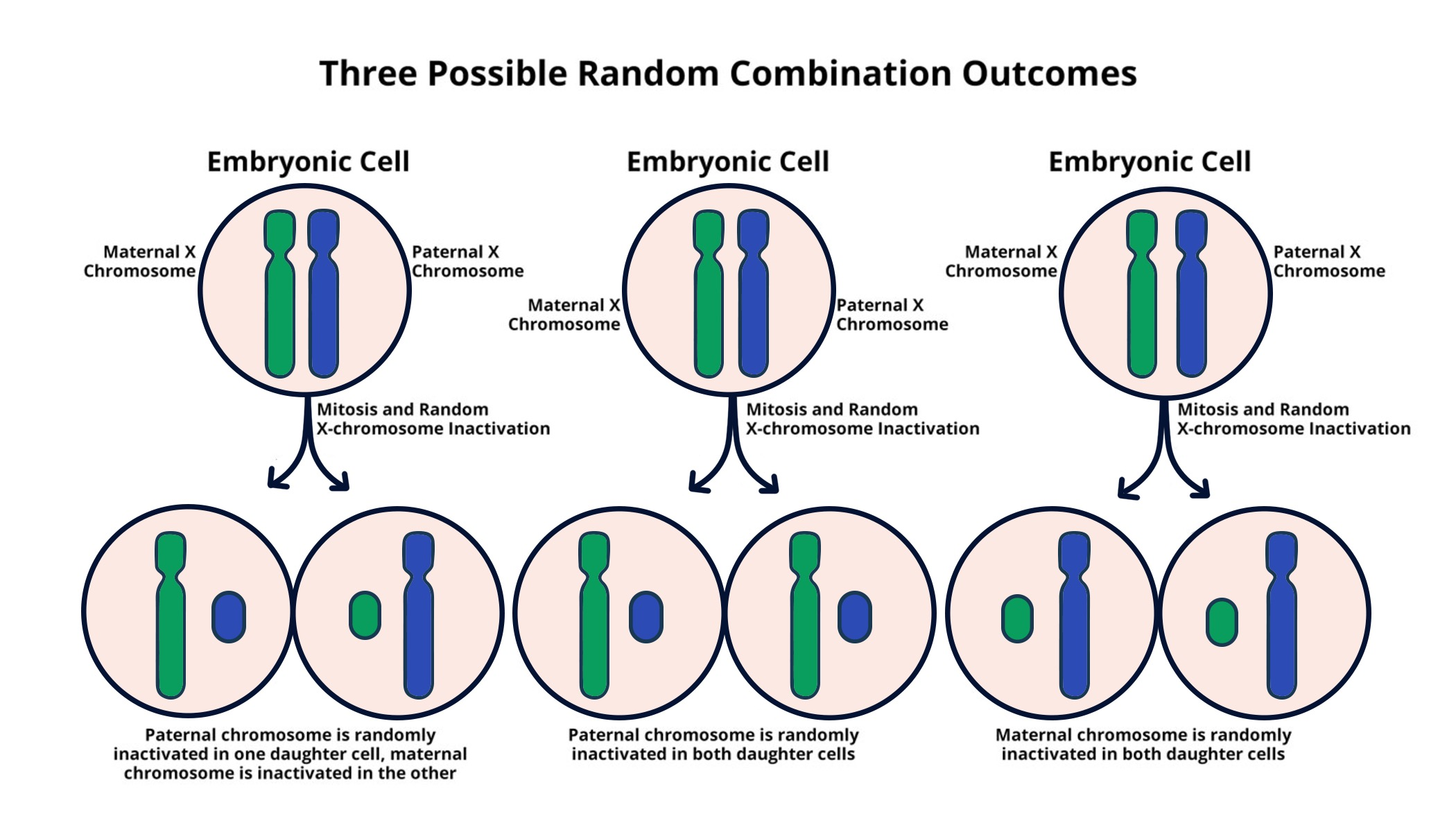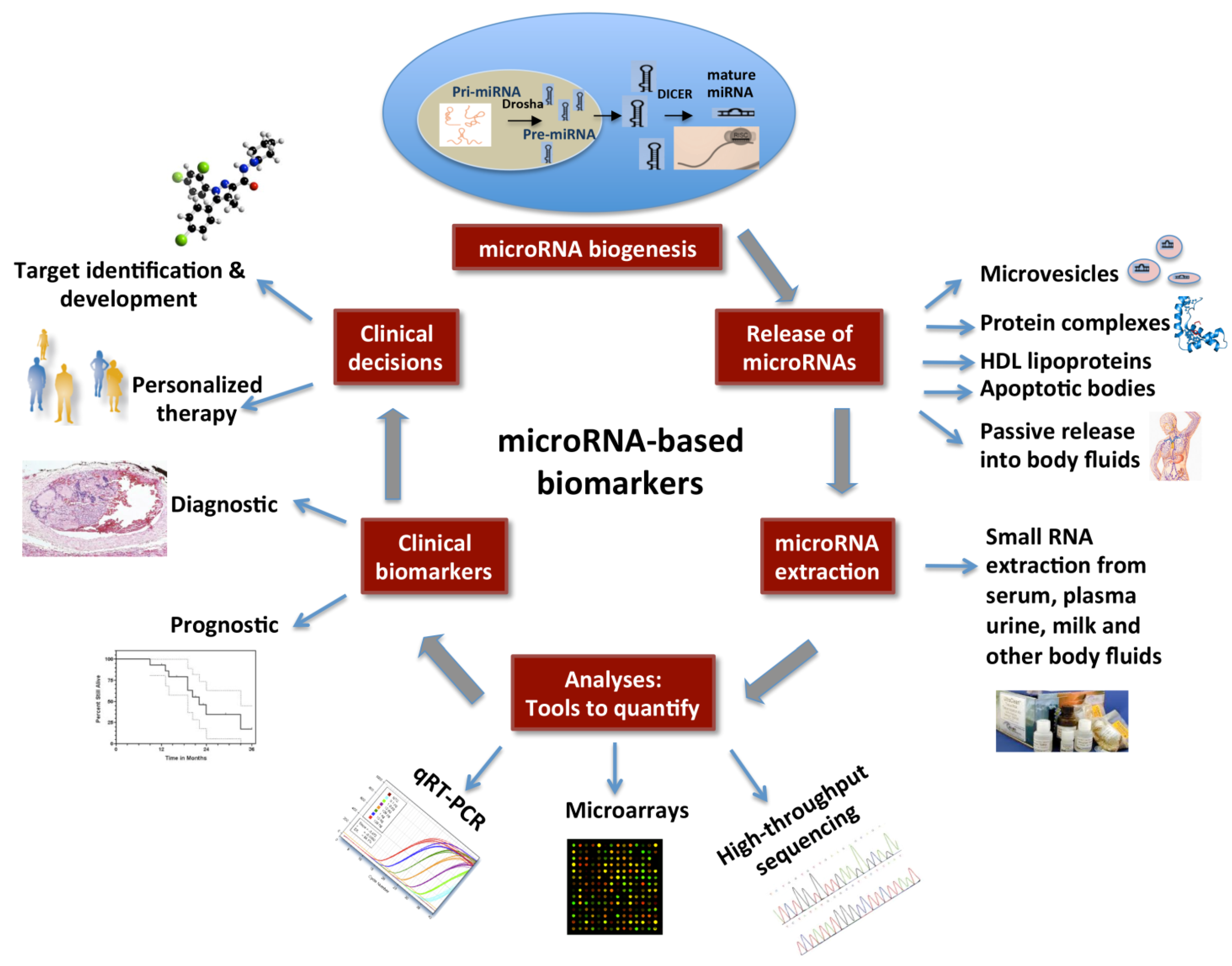X chromosome inactivation is a fascinating biological process critical for maintaining genetic balance in female mammals, where two X chromosomes must be managed effectively. This cellular mechanism silences one of the X chromosomes to prevent an overexpression of X-linked genes, thereby safeguarding against genetic disorders like Fragile X Syndrome and Rett Syndrome. The recent advances in understanding how chromosome silencing works have opened doors to innovative treatments in the realm of genetic disorders treatment. Researchers, particularly in Jeannie T. Lee’s lab, are exploring gene therapy approaches to reactivate these silent genes, potentially providing relief for those affected. As science uncovers the complexities of X inactivation, the prospect of developing effective therapies becomes increasingly tangible.
The phenomenon of X chromosome inactivation, often referred to as dosage compensation, ensures that females, who possess two X chromosomes, do not express twice the amount of genes found on these chromosomes compared to males. This unique biological mechanism plays a significant role in regulating gene expression, with implications for various genetic disorders, including Fragile X and Rett syndromes. By silencing one X chromosome, cells can maintain a stable genetic environment, thereby mitigating the effects of harmful mutations. Recent research advances suggest that manipulating this chromosome silencing could lead to groundbreaking gene therapy options, paving the way for effective treatments in genetic disorders that arise from X-linked mutations. As we delve deeper into the science of chromosomal regulation, new therapeutic pathways continue to emerge for individuals facing these challenges.
Understanding X Chromosome Inactivation: A Breakthrough in Genetics
X chromosome inactivation (XCI) plays a crucial role in ensuring gene dosage balance between males and females. In females, who have two X chromosomes, one is randomly silenced to prevent an overdose of gene expression. This process has been observed for decades, yet the intricate mechanisms behind XCI remained elusive until recent studies, including those by Jeannie Lee’s lab, unveiled the complexities of this cellular phenomenon. By investigating the ‘chromosomal Jell-O’ that surrounds the chromosomes, scientists have uncovered how Xist RNA influences the inactivation process, leading to significant advancements in our understanding of genetic disorders connected to the X chromosome.
The implications of understanding XCI extend beyond mere academic curiosity; they hold potential for innovative treatments for genetic disorders such as Fragile X Syndrome and Rett Syndrome. By targeting the mechanisms involved in X inactivation, researchers aspire to reactivate genes silenced due to harmful mutations. This endeavor could pave the way for therapies that not only restore function in affected individuals but also offer insights into gene therapy techniques that may one day be employed to tackle other genetic disorders.
The Role of Gene Therapy in Treating Genetic Disorders
Gene therapy has emerged as a revolutionary approach in the treatment of various genetic disorders, aiming to correct or replace defective genes. By utilizing techniques that may include the unsilencing of the inactive X chromosome, researchers are exploring the future of gene therapy as a viable treatment option for conditions like Fragile X Syndrome, where intellectual disabilities stem from mutations on the X chromosome. This method involves delivering functional copies of a gene to cells utilizing vectors, enhancing the cell’s ability to produce the necessary proteins that may have been deficient due to genetic mutations.
Furthermore, innovative gene therapy strategies could significantly alter the landscape of how genetic disorders are treated. For conditions like Rett Syndrome, where neurodevelopmental implications are severe, therapies derived from a deeper understanding of X chromosome dynamics can provide hope for patients and their families. As researchers optimize these gene therapy approaches, the potential for clinical trials grows, signaling a new era in the fight against genetic disorders that previously appeared untreatable.
Exploring the Connection Between Chromosome Silencing and Genetic Diseases
Chromosome silencing, and particularly X chromosome inactivation, is a fundamental mechanism by which cells maintain homeostasis. The insights gained from studies on this process reveal a complex interplay between genetic expression and disease pathology. For instance, in individuals with Fragile X Syndrome, the silencing of genes can prevent the expression of healthy alleles, thereby exacerbating the condition. Understanding how silencing operates at such a granular level allows for targeted interventions that could potentially alleviate symptoms associated with these genetic disorders.
Moreover, the relationship between chromosome silencing and diseases like Rett Syndrome showcases the potential for high-impact research in this field. As scientists like Jeannie Lee unravel the mysteries behind how certain genes remain inactive while others are unaffected, they open pathways to therapeutic strategies that intentionally manipulate these processes. This research not only underscores the importance of genetic disorders treatment but also highlights the need for ongoing exploration into the mechanisms that govern gene expression and regulation.
Fragile X Syndrome: Implications of X Chromosome Research
Fragile X Syndrome, the leading inherited cause of intellectual disability, is directly linked to mutations on the X chromosome. The recent discoveries regarding X chromosome inactivation have critical implications for the treatment of this condition. Researchers are now focusing on strategies to unsilence the affected genes, allowing for the restoration of normal function that could dramatically improve the quality of life for those affected. By targeting the mechanisms unveiled through studies of ‘chromosomal Jell-O’, potential therapies are on the horizon that aim to reactivate silenced genes associated with this disorder.
The journey toward effective treatment for Fragile X Syndrome has been fueled by decades of meticulous research into chromosome silencing and gene expression. With breakthroughs emerging from Jeannie Lee’s lab, the prospect of harnessing these insights into tangible therapies is no longer a distant dream. Patients and advocates alike are hopeful that ongoing investigations will lead to treatments capable of reversing the debilitating effects of this genetic condition, paving the way for improved educational and social outcomes for affected individuals.
Rett Syndrome and the Potential for New Therapeutic Approaches
Rett Syndrome, a neurodevelopmental disorder primarily affecting females, has sparked particular interest among researchers studying X chromosome dynamics. The silencing processes that characterize X chromosome inactivation also extend their influence to the genes associated with Rett Syndrome. By understanding how these genes are affected by silencing, scientists aim to develop targeted therapies that might restore normal gene expression and alleviate symptoms. This focus on unsilencing mutations is critical to the development of effective interventions that could change the lives of individuals living with Rett Syndrome.
The treatment landscape for Rett Syndrome is poised for transformation, thanks to ongoing research delving into the molecular intricacies of X chromosome inactivation. As scientists optimize methods to reactivate silenced genes, there is growing optimism that these therapies could lead to meaningful clinical outcomes. The potential for gene therapy approaches that not only target the affected genes but also mitigate side effects poses an exciting avenue for future research, making Rett Syndrome a focal point in the quest for effective genetic disorder treatments.
Gene Therapy Innovations: A Future for Genetic Disorder Treatments
Gene therapy is heralded as a transformative method for treating genetic disorders, and recent research offers a glimmer of hope for those affected by diseases linked to the X chromosome. As scientists work on techniques to manipulate gene expression by targeting inactivated regions of the chromosome, they envision a future where gene therapies can effectively cure or manage conditions like Fragile X and Rett syndromes. By integrating advanced molecular techniques with an understanding of ectopic gene expression, researchers are forging new frontiers in genetic medicine.
The potential of gene therapy is vast, from correcting mutations to creating new pathways for gene expression. Innovations derived from the study of X chromosome silencing will not only enhance our understanding of the mechanisms underlying these disorders but will also foster the development of therapies that are patient-centric. Leveraging findings from chromosome research, the next generation of treatments could offer precision medicine solutions, ensuring that individuals with genetic disorders receive the most effective and personalized care possible.
Impacts of Chromosome Silencing on Gene Expression
Chromosome silencing significantly influences gene expression, especially on the X chromosome. The inactivation of one X chromosome in females ensures that dosage compensation is achieved, preventing an imbalance that could lead to overexpression of X-linked genes. Understanding this intricate process is crucial, especially as it relates to genetic disorders like Fragile X Syndrome and Rett Syndrome, where faulty gene expression can lead to severe developmental challenges. Researchers are therefore delving into how genes are regulated through silencing mechanisms, seeking potential pathways to modulate gene activity in therapeutic contexts.
The exploration of chromosome silencing also extends to understanding how therapies could be designed to selectively unsilence genes involved in genetic diseases. By elucidating the pathways and proteins involved in XCI, scientists are paving the way for innovative treatments that could restore normal gene function and expression. This vital research underscores the importance of chromosome dynamics in shaping gene interactions and sets the stage for future breakthroughs in genetic disorder treatments.
Future Directions in Chromosome Research
As we embark on new explorations of chromosome dynamics, future research in X chromosome inactivation promises exciting advancements in the field of genetics. The intersection of basic research and clinical applications is becoming increasingly apparent, with potential breakthroughs aimed at treating genetic disorders like Fragile X Syndrome and Rett Syndrome. Emerging therapies based on the understanding of chromosomal mechanisms could revolutionize how we approach conditions rooted in X chromosome abnormalities, raising hopes for more effective treatments and management strategies.
Looking ahead, the integration of cutting-edge genomic technologies and better-defined understanding of gene silencing mechanisms will likely yield multifaceted approaches to combat genetic disorders. As scientists like Jeannie Lee continue to drive these investigations forward, the potential for novel treatments that tackle the root causes of diseases rather than merely their symptoms is brighter than ever. This could herald a new era in genetic medicine, where tailored therapies become the gold standard for individuals affected by genetic disorders.
The Importance of Research Funding in Genetic Studies
The progress made in understanding X chromosome inactivation, as explored by Jeannie Lee and her colleagues, demonstrates the critical role of sustained research funding in advancing genetic studies. For over two decades, the National Institutes of Health provided essential support that allowed researchers to delve into fundamental questions surrounding chromosomal behavior and gene expression. Such financial contributions enable scientists to conduct thorough investigations, paving the way for discoveries that can ultimately lead to therapeutic innovations.
Research funding not only facilitates the exploration of complex biological systems but also empowers scientists to turn their findings into actionable treatments. With the recent breakthroughs concerning XCI and its implications for conditions like Fragile X and Rett syndromes, continued investment in genetic research is imperative. As researchers seek to transition from basic discoveries to clinical applications, the need for robust financial support remains integral to transforming scientific insights into realities that can benefit individuals suffering from genetic disorders.
Frequently Asked Questions
What is X chromosome inactivation and why is it important?
X chromosome inactivation is a biological process in which one of the two X chromosomes in female cells is silenced to balance gene dosage between males (with one X chromosome) and females (with two). This process is crucial for normal development and helps prevent disorders related to gene expression. Understanding X chromosome inactivation is essential for advancing gene therapy approaches for genetic disorders such as Fragile X Syndrome and Rett Syndrome.
How does X chromosome inactivation relate to genetic disorders like Fragile X Syndrome?
X chromosome inactivation is significant in the context of Fragile X Syndrome because this condition is caused by mutations on the X chromosome. In females, if the affected X chromosome is inactivated, the healthy copy may remain functional, mitigating the severity of the disorder. Research into the mechanisms of X chromosome inactivation could lead to innovative treatments that reactivate the healthy gene, offering hope for those affected by Fragile X Syndrome.
What role does the gene Xist play in X chromosome inactivation?
The Xist gene is crucial for X chromosome inactivation as it produces an RNA molecule that coats the X chromosome and initiates its silencing. Xist changes the physical properties of the surrounding chromatin, allowing for the inactivation process to occur. This mechanism is vital for achieving chromosome silencing and is a key focus in research aiming to develop treatments for genetic disorders linked to mutations on the X chromosome.
Can gene therapy reverse X chromosome inactivation effects in disorders like Rett Syndrome?
Gene therapy aims to reverse the effects of X chromosome inactivation in disorders such as Rett Syndrome by targeting the inactivated X chromosome to reactivate the healthy gene. Recent studies suggest that with the right therapeutic advancements, it may be possible to unsilence the genes involved, potentially restoring function and alleviating symptoms associated with Rett Syndrome and similar X-linked disorders.
What potential therapies are being developed related to X chromosome inactivation?
Researchers are developing potential therapies that leverage insights from the mechanisms of X chromosome inactivation. These could include compounds designed to unsilence genes affected by mutations, aimed particularly at treating genetic disorders like Fragile X Syndrome and Rett Syndrome. Continued optimization and safety studies of these approaches are expected to progress toward clinical trials, offering new hope for affected individuals.
| Key Point | Details |
|---|---|
| X Chromosome Inactivation | In females, one of the two X chromosomes is inactivated to prevent overexpression of X-linked genes. |
| Role of Xist | Xist RNA interacts with the Jell-O-like substance surrounding chromosomes to facilitate the inactivation process. |
| Gelatinous Substance | The ‘Jell-O’ coats chromosomes and keeps them from tangling, playing a crucial role in the inactivation process. |
| Research Implications | Discovering methods to unsilence X-linked genes can lead to potential treatments for Fragile X Syndrome and Rett Syndrome. |
| Clinical Trials | Studies to further optimize and assess safety of potential treatments are underway before clinical trials. |
Summary
X chromosome inactivation is a fascinating biological process essential for balancing gene expression between males and females. Recent research led by Jeannie T. Lee has provided insights into how this inactivation occurs, opening doors for potential therapies for genetic diseases like Fragile X Syndrome and Rett Syndrome. Understanding the mechanics of X chromosome inactivation not only sheds light on basic biological questions but also highlights the clinical implications of restoring gene function in those affected by X-linked disorders. This progress has significant potential to improve treatment options for many individuals suffering from these conditions.



